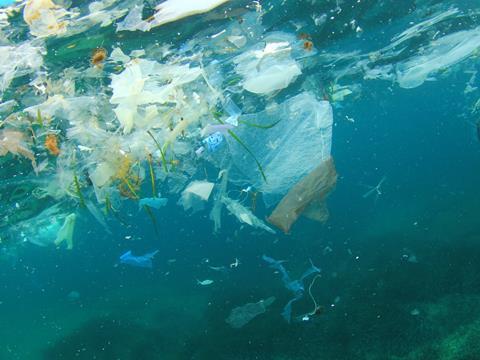
A new study argues that the ocean contains fewer microplastics than previously thought and bears a denser layer of pollution on the surface than beneath the waves – yet it warns that these larger plastic fragments can remain for decades.
Prior to the research, over 25 million tons of plastic were estimated to pollute the ocean. However, this apparently stemmed from the assumption that 1% of the total amount of plastic in the ocean floats on its surface.
Published in Nature Geoscience, the study forms part of the Topios project and lead author Mikael Kaandorp’s doctoral research at Utrecht University. It was conducted by feeding a computer model with measurements and observations about the amount of plastic in the ocean – utilising variables such as the rates at which plastic washes ashore, breaks down into smaller pieces, and is covered by enough algae to sink – with which the model calculated the total array of plastics.
According to the study, the weight of the plastic surface layer, previously thought to weigh a quarter of a million tons, is closer to two million – yet if the plastic on the ocean floor is excluded, the amount floating in the deeper ocean is calculated at around one million tons. Therefore, it suggests that the total amount of plastic in the ocean is not as high as previously thought.
It is also claimed that the established estimates of between 4 and 12 million tons of plastic ending up in the ocean every year are too high. Apparently, the figure decreases to half a million tons in reality. This would mean that the total mass of microplastics beneath the ocean’s surface is smaller than originally thought.
Erik van Sebille, Mikael Kaandorp’s PhD supervisor, indicates that this is an optimistic sign for ocean cleanup; microplastics are very small and hard to extract from water, but there are reportedly far fewer of them than large, floating pieces of plastic waste, which are easier to retrieve. Around half of this waste is said to come from fishing boats.
On the other hand, plastics in general remain in the ocean for decades longer than originally thought, the report suggests.
“It means that it will take much longer until the effects of measures to combat plastic waste will be visible,” Kaandorp explains. “It will be even more difficult to get back to the situation as it once was. Also, if we don’t take action now, the effects will be felt for much longer.”
He goes on to assert that the ‘record number’ of measurements and observations included in the models improves the accuracy of the resultant data compared to previous computer-generated data.
“Therefore, this model is more accurate,” Kaandorp continues. “Until now, scientists were mainly looking at measurements of amounts of plastic in the upper layer of the water surface.
“We added counts of beach cleanups in various places around the world, and observations of large floating plastic objects on the water, among other things. Those pieces are relatively scarce, but because they are heavy, they make up a large portion of the total amount of plastic in the ocean.”
In a development that could combat this issue, Prevented Ocean Plastic intends to open 25 high-volume collection centres across various global regions by 2025. These are set to gather and recycle ‘ocean-bound’ plastic waste into its ‘fully traceable’ plastic material.
It has also conducted research alongside the University of Georgia to better understand how inland litter ends up in the ocean. Their overall goal is to create a new tool for stakeholders and community leaders to combat the plastic waste affecting their local environments and identify its causes.
Last year, Greiner Packaging extended its cooperation with Plastic Bank to collect and return ocean-bound plastic to the global supply chain; in turn, this expected to reduce pollution and improve the lives of collection community members.
If you liked this article, you might also enjoy:
The Lidl approach to packaging sustainability
How did Brazil achieve its 100% aluminium can recycling rate – and can it be replicated in the EU?
Experts have their say on the EU’s Packaging and Packaging Waste Directive revisions
A deep dive into the most important packaging sustainability trends and solutions







No comments yet